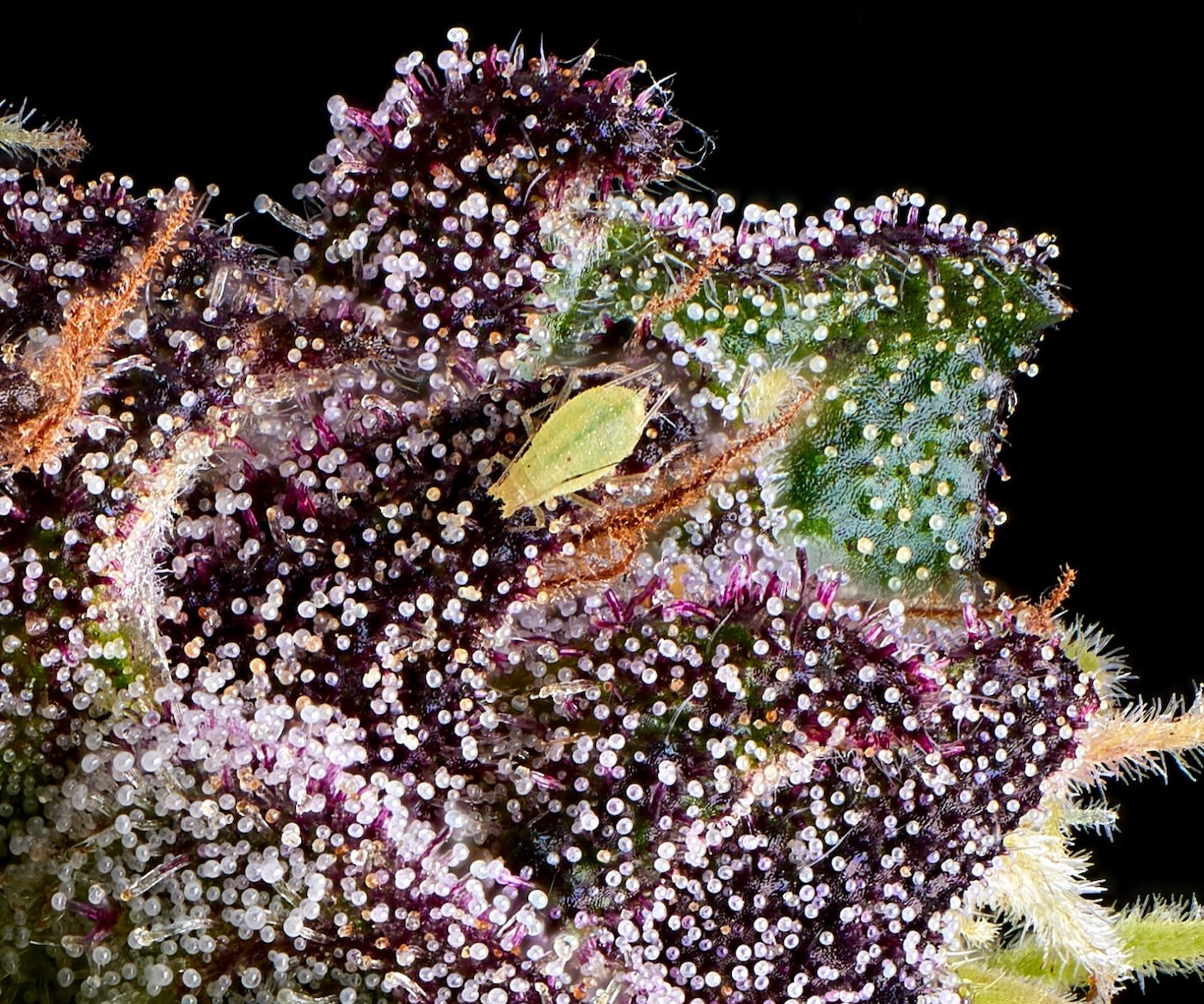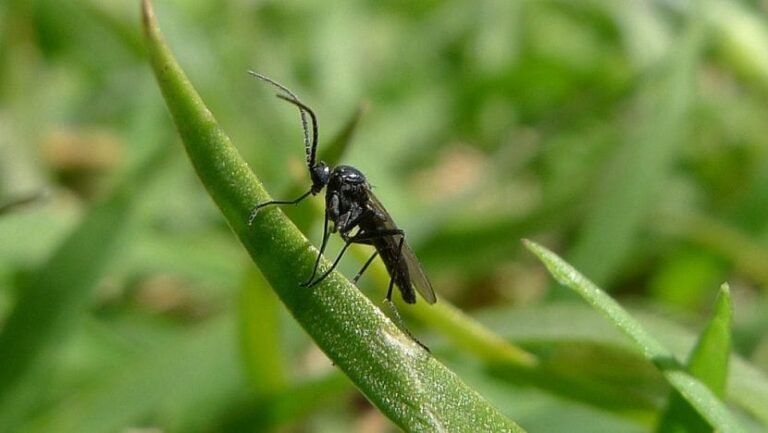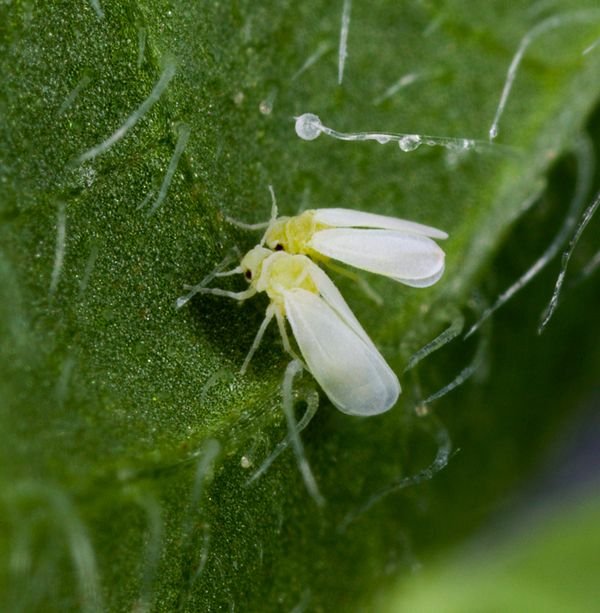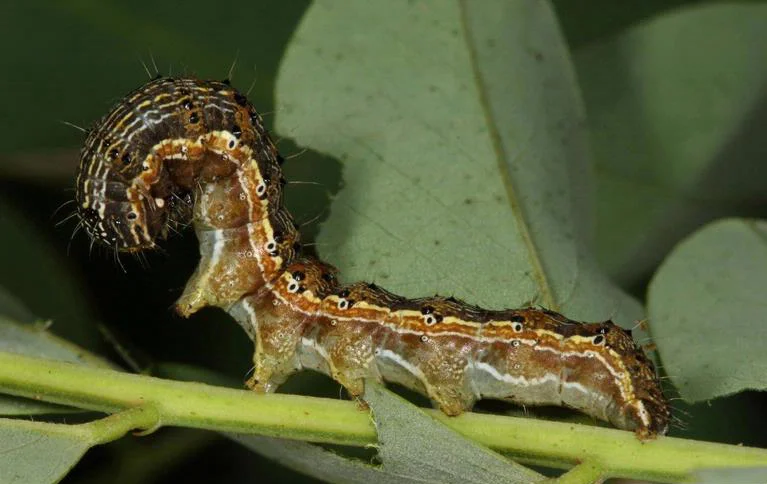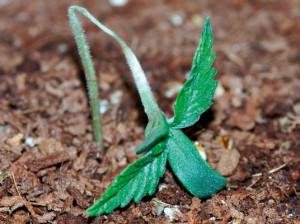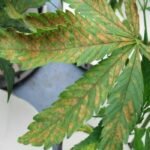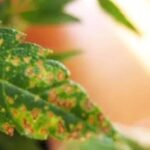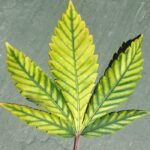Aphids are small insects of different colors (commonly yellow, black or green) with a size of 1 to 3 mm.

They are found on the underside of leaves and stems, forming large colonies of dozens (or hundreds) of them. They develop a symbiotic relationship with other insects such as ants or bees. Aphids secrete a sugary substance from their anus, similar to honeydew, which the ants feed on, so they protect the aphids from their predators. Something similar happens with bees, which incorporate this honeydew into the honey they produce.

Aphid reproduction
Aphids may require a single plant to complete their life cycle, which is called a monoecious cycle, or they may require two different plants, which is then a dioecious cycle.
They can also reproduce through eggs (sexual reproduction), involving both females and males, which are usually smaller. Or asexually (parthenogenesis).
As generations progress and depending on environmental factors, their offspring reproduce in different ways, resulting in a huge degree of polymorphism. The metamorphosis that nymphs undergo until they reach the adult stage is minimal, so larvae and adults are very similar except for their size.
Their reproductive period is short, so they can quickly become a serious problem.
Outdoors, the eggs remain dormant all winter until climatic conditions are favorable for them to hatch.
In indoor crops they will reproduce continuously, which can have serious consequences if the pest is not treated in time.

Aphid Symptoms and damage
Aphids feed by using piercing-sucking mouthpieces that pierce plant tissue and suck out the sap. By feeding on the plant, there is a risk of infecting the plant with viruses or diseases.
If Aphids don’t tear into the plant tissue to feed, it will be very difficult to notice any signs of an infestation, as they don’t leave marks on the leaves like other insects do.
The first symptom will be the presence of Aphids on the plants. Some leaves may also turn yellow, wrinkle, and dry out, and honeydew-like deposits may appear, which can attract various diseases and fungi. Aphids prefer to feed on tender plant shoots, which may have a sticky appearance.
The presence of ants is another symptom of Aphids on the plant because they feed on the honeydew secreted by the Aphid.
It’s a pest capable of killing crops due to its ease of reproduction and movement, as well as its ability to transmit viruses and diseases.
They prefer warm climates and dry environments, with spring and summer being their natural breeding season.
Excessive fertilizer use can also increase the risk of Aphids appearing.

Aphid Prevention and Control
Keep your garden clean, remove weeds and decaying plant debris.
Choose a beneficial asociation of plants, nettles, marigolds and mint.
Fence around plants sensitive to Aphids, such as roses, hydrangeas, tulips, and various cannabis varieties.
Regularly spray natural insecticides such as potassium soap with neem oil.
Use diatomaceous earth, as this always helps keep insect or fungal attacks at bay.
There are natural and biological remedies such as nettle or garlic decoction, or a homemade tobacco-based insecticide (nicotine is a potent poison).
If the infestation is only found on a small shoot, remove the affected parts and continue with your usual pest control measures.



